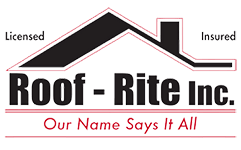Roof Storm Damage: What to Look for and What to Do
Your roof is one of the most important parts of your home. It protects you from the elements and keeps your home warm and dry. But even the best roofs can be damaged by storms.
Here are some of the most common types of roof storm damage:
- Missing or damaged shingles: Shingles are the primary barrier that protects your roof from the elements. If shingles are missing or damaged, water can seep through and cause leaks.
- Lifted or curled shingles: Shingles can be lifted or curled by strong winds. This can break the seal between the shingles, allowing water to leak in.
- Cracked or broken flashing: Flashing is the metal or plastic trim that helps to seal around vents, chimneys, and other roof penetrations. If flashing is cracked or broken, water can seep in and cause leaks.
- Hail damage: Hailstones can dent or pockmark shingles, making them less effective at protecting your roof from the elements.
- Snow and ice damage: Heavy snow and ice can put a lot of stress on a roof. If the snow or ice is not removed promptly, it can cause the roof to collapse.
If you think your roof has been damaged by a storm, there are a few things you should do:
- Inspect your roof carefully. Look for missing, damaged, or curled shingles. Check for cracks or breaks in the flashing. Look for dents or pockmarks from hail.
- If you find any damage, take pictures. This will help you document the damage and make a claim with your insurance company.
- Contact a roofing contractor. They can assess the damage and recommend the best course of action.
If your roof is severely damaged, you may need to have it replaced. However, if the damage is minor, you may be able to have it repaired. The cost of repairs will vary depending on the extent of the damage.
By following these steps, you can protect your home from further damage and get your roof back to its original condition.
Here are some additional tips for preventing roof storm damage:
- Have your roof inspected regularly. This will help you identify any potential problems before they become serious.
- Keep your gutters and downspouts clean. This will help to prevent water from pooling on your roof, which can increase the risk of leaks.
- Secure loose items on your roof. This includes things like ladders, Christmas lights, and satellite dishes.
- Trim trees that overhang your roof. This will help to prevent branches from falling on your roof during a storm.
By following these tips, you can help to keep your roof safe from storm damage.
